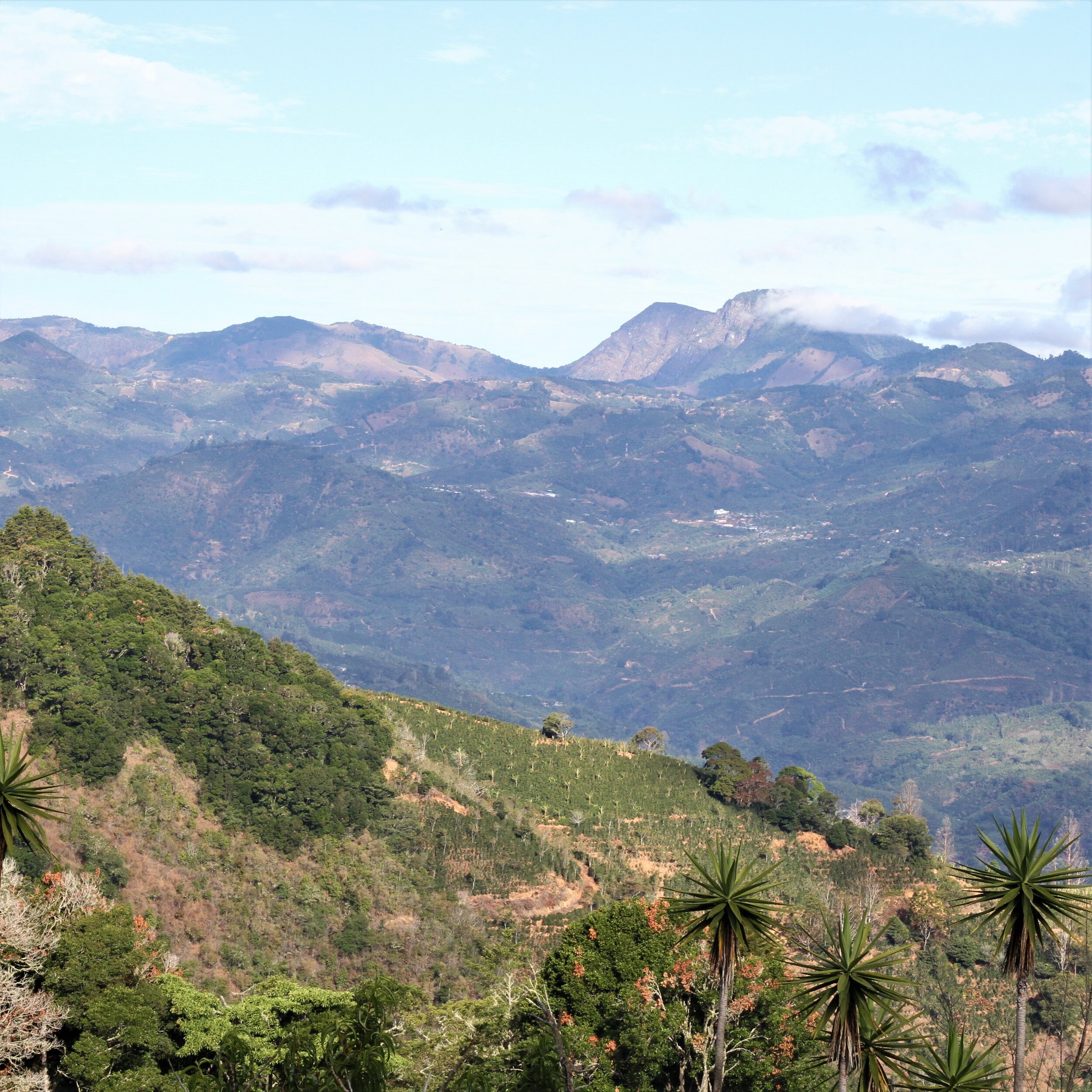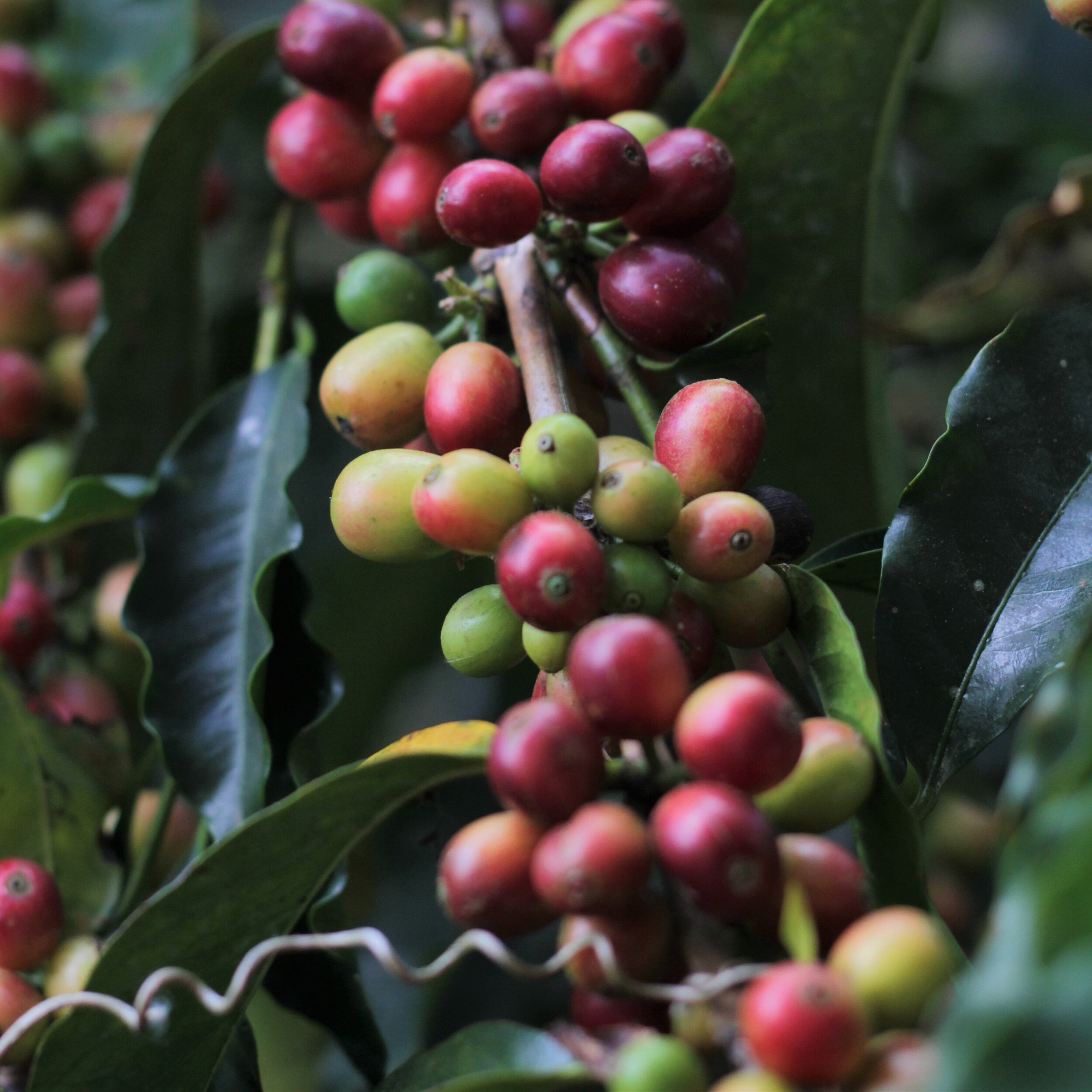Coffee is a fruit.
After being harvested from the coffee trees, the coffee fruits - commonly called ‘cherries’, though they are actually a stone fruit - must be processed. There are various ways to do this, but the goal of each method is to separate the internal seed from the surrounding pulp and outer skin, while gaining tasty flavors from the fermentation steps along the way. Typically, each fruit contains two seeds which are called ‘beans’. When the seeds are adequately pulp-free and dry, they can then be hulled, roasted, ground, and brewed.
Dry : Natural Process
Once picked and sorted, ripe coffee cherries are spread in a thin layer to dry in the sun. This could be on concrete patios or on a raised platform or mesh ‘bed’ that allows for better air circulation. The cherries must be frequently raked to ensure even drying and to prevent mold or over-fermentation. Depending on weather conditions, the drying process can take up to a month; when the cherry is fully dry the outer skin and fruit fibers are removed from the bean. Due to the prolonged contact of the bean and surrounding fruit pulp, natural coffees often have a sweet and fruity flavor profile.
Wet : Washed Process
After harvest, the outer skin and fruit fibers are mechanically removed (depulping) and the beans are sorted and soaked in order to ferment away all remaining fruit fibers. There is a lot of variation in these steps, notably in the length of fermentation and the types of yeast and bacteria used, all of which have a significant impact on the flavor profile in the final cup. After fermentation, the beans are washed again and dried, either on drying patios/beds or in mechanical dryers (or some combination). Washed coffees are often prized for clarity and bright acidity in the flavor profile.
Wet : Pulped Natural Process / Honey Process (White, Yellow, Red, Black)
The outer skin is removed from the coffee cherry (using a depulper or forced demucilage equipment), leaving the flesh around the bean. The cherries are then spread out to dry and the dried flesh is removed from the beans when drying is complete. In honey processing, careful attention is paid to the percentage of fruit left on the bean before drying and the color spectrum refers to these percentages. Honey process is specific to Central America, where honey (or miel) refers to the fleshy part of the coffee fruit.
Wet : Semi-Washed / Wet-Hulled Process
Coffee cherries are first de-pulped and briefly dried (to a higher moisture content than other processes). Then the seeds are hulled (removal of the parchment layer, which in all other processes happens just prior to shipment) and dried again. This process is specific to Brazil and Indonesia.




